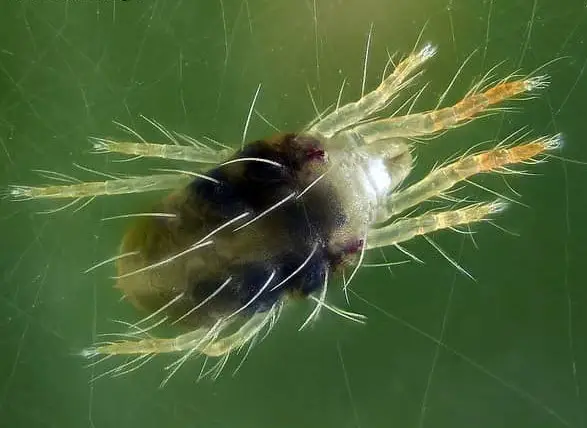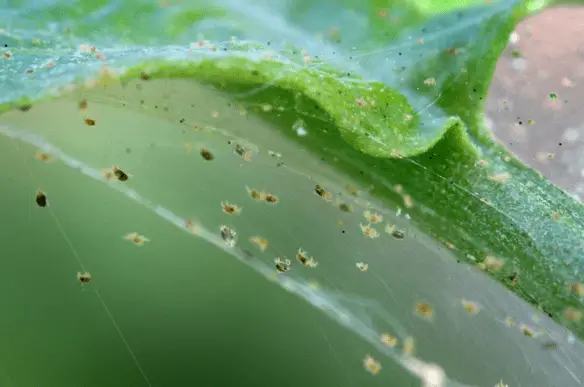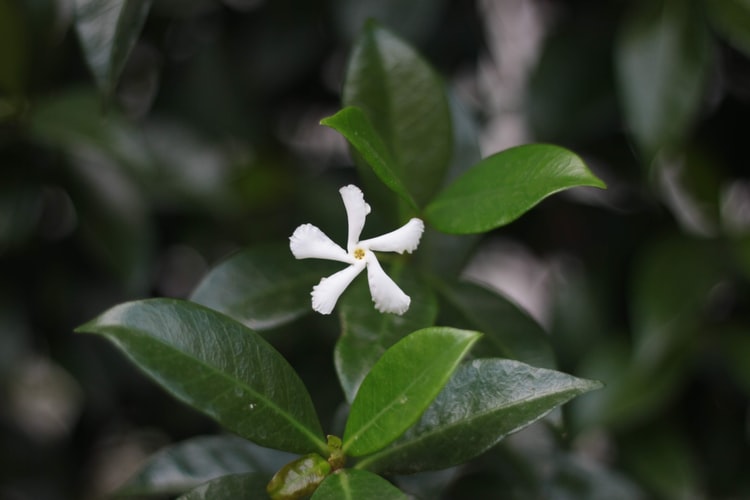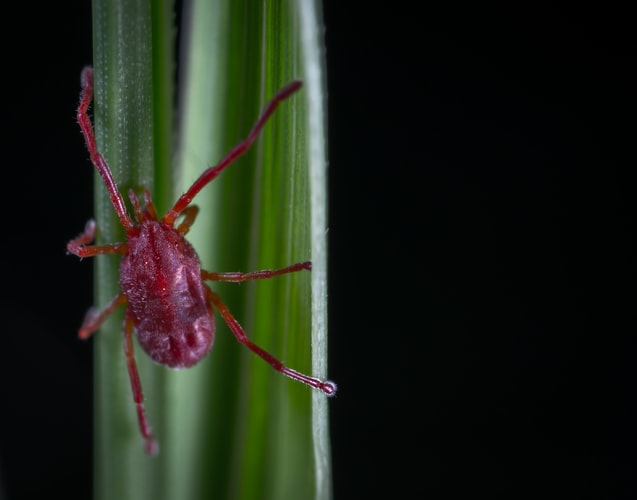If around spring to fall you start to notice that your plants are covered with black splashes almost like a heavy dark powder and you’re wondering why are your leaves turning black and seem almost burned and kind of dead, then most probably it is sooty mold disease.
If you’re not familiar with sooty mold disease, this article is then for you! I will introduce to you what is sooty mold disease, its causes, what to do when you have it, and how to prevent it from ever happening again.
Table of Content
What Is Sooty Mold Disease
Sooty mold disease, also called blotch or black mold, is a fungal disease that grows on plants. Its main characteristic is the black powder that appears on top of the leaves, the stems, and even the fruits. It got this name because it resembles soot.
This disease occurs in all kinds of plants such as foliage plants and garden trees, not necessarily only in vegetables and flower seedlings. It occurs when the temperature rises, which is after winter from spring to autumn.
Symptoms & How To Identify Sooty Mold Disease
If you have aphids, scale insects, leafhoppers, mealybugs, or whiteflies around your plants or trees, you’ll notice that these pests and insects produce a sticky sugar-rich liquid on the plant.
Black powdery fungi cover your plant’s leaves, fruits, branches, and stems. In severe cases, you’ll notice the leaves drop. The growth of the plant stops because the leaves are covered with black powder, and therefore, the photosynthesis process slows down.
What Causes Sooty Mold Disease
So, What is causing your plant to turn black? why are your beautiful plants and fruits all of a sudden turning plants? There is no reason to panic! Once you learn the causes of sooty mold fungal disease, it will be easy for you to treat and prevent it. It does not harm your plant and is treatable.
The cause is the secretion of the pests such as scale insects, aphids, and whiteflies. They suck on the plant’s sap and produce a sticky honeydew.
The honeydew produced by them is sticky and sweet because it contains a large amount of sugar. This honeydew can be washed with water and it should be removed easily. However, if you leave it unnoticed, bacteria will take over the sticky honeydew and multiply resulting in sooty mold disease.
Effects Of Sooty Disease On Plants
As mentioned earlier, it is a condition that results from the secretion of pests and insects. It does not parasitize the plant directly by itself. That means your plant is not going to die, However, if the disease is left untreated, your plant or tree will weaken and the growing process reduces.
If you remove the soot using a paper tissue, it might help but it will not be fully effective because the main issue is the pests and insects that caused the disease. They are capable of causing greater damage than sooty mold disease.
Similar Article: Most Common Orchids Diseases & How to Treat Them
How To Treat Sooty Mold Disease
How To Remove The Black Mold From The Plant
The strategy used to remove sooty mold disease is simple.
We first need to remove the black mold sitting on top of the plant by rubbing it with paper tissue or a toothbrush while spraying it with water. However, you need to be careful if you use a toothbrush and use it gently so you won’t scratch the plant and cause wounds that result in more diseases and viruses.
Bear in mind that the powdery mold will not be removed completely, so don’t rub too harshly.
If you have ground-planted plants or foliage plants where the green leaves play an important role, it is best recommended to prune the infected areas. This way, even the pests which were taking over that area will be controlled.
How To Control Pests That Cause Sooty Mold Disease
The pests that cause this disease are aphids, scale insects, and whiteflies. In order to get rid of these pests and insects, you can follow different methods, you can either choose homemade solutions or go for chemicals (pesticides/ insecticides).
I would personally recommend avoiding chemicals when your plants or trees are blooming and starting to bear fruits. Even though it might take more time to get rid of them, it is best to remove the pests manually and then generously shower the plant with water. By showering the plant, we’d be making sure to remove all the eggs and invisible small larvae.
In case you decide to use chemicals, it would be more effective if you remove some of the obvious, visible, big pests first before spraying.
1. How To Treat Aphids
- If you can spot only a few aphids, try to remove them using your hands while wearing gloves of course.
- You can also try to wash the aphids away from the plant with a jet of water.
- Other options include using a chemical pesticide spray. Follow the instructions on the product for better results because every brand has its own way of treatment.
Learn more about aphids in this article: Causes of Aphids and How to Treat & Prevent Them Naturally
2. How To Treat Scale Insects
It is best to remove scale insects as soon as you spot them on the orchids.
- Once you identify them, if you can, scrape them off immediately.
- Remove the infected leaves and bulbs.
- Do not use a brush to scrape off the insects as the brush can scratch the buds of the plant and leave out open wounds that can be touched by different diseases and viruses.
- Use either a soft cloth or gauze gently to remove the insects.
- Use an effective insecticide against scale insects.
In order to remove them, you’ll need to be patient because it can be quite difficult to get rid of them once and for all. So, please keep an eye on them constantly every one or two weeks.
3. How To Treat Whiteflies
- Use a chemical spray such as Orthene or Safer Soap every 4 days until they are all removed.
- Another alternative can be laundry soap water. Dissolve a little bit of soap in water and then spray the whole plant.
- Fitoverm also works for whiteflies.
How To Prevent Sooty Mold Disease
In order to prevent sooty mold disease, we need to control and prevent the causative pests away from our garden.
1. How To Prevent Aphids
- In order to prevent aphid infestation on our orchids, we need to take advantage of the fact that aphids tend to be attracted to the color yellow. Try to use yellow tape or yellow dishes which contain soap water and place them on the bench to reduce density.
- Aphids hate shiny things. You cant use aluminum foil around the pot of your orchids. The aluminum will prevent the aphids to get on your plant.
2. How To Prevent Scale Insects
Scale insects tend to be transferred, therefore, if you introduce a new plant to your home garden, make sure to check it very well for any kind of pests or insects.
3. How To Prevent Whiteflies
- Eliminating all the weeds around the plant will prevent whitefly infestations.
- Cultivation tools that you use must be disinfected and sanitized so you don’t recycle the spread of these insects.
- Cut off all the infected areas of the orchid.
Conclusion
It is very important to take care of our plants and trees. We always need to be on the lookout for any kind of new changes in the garden. A lot of people are not familiar with the plant diseases and their names so they would try to describe what their plants are going through vaguely.
Same for sooty mold disease; many people come to me to ask about what’s wrong with their plants, “Why does my plant have black-looking powder on its leaves?” or “Why my plants’ leaves are turning black?”
The cause of black leaves can be different and a result of various factors. For example, the reason why orchid leaves are turning black might not be the same as why potato leaves are turning black.
As I mentioned before, this disease is not very serious, it might take a while to be treated, but it is harmless.




